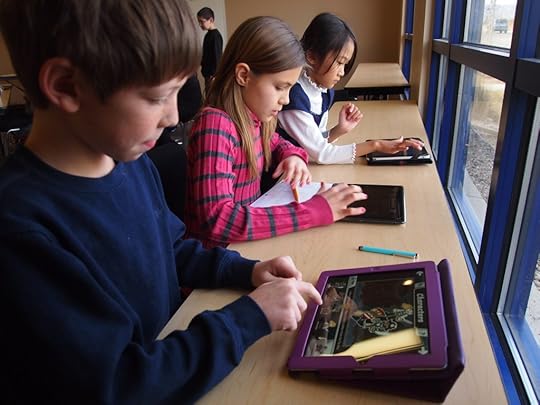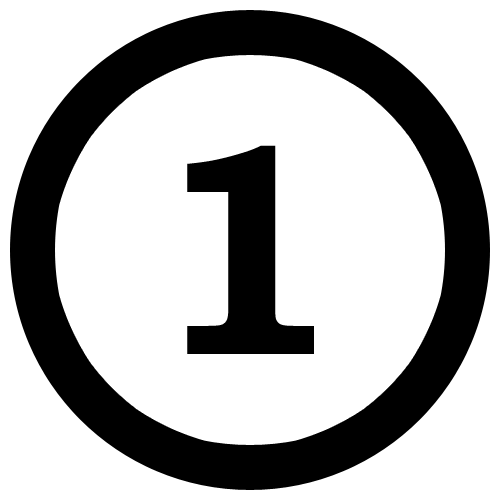Liisa Kyle's Blog, page 6
May 1, 2021
What’s On Your Mind?
 Quick! What are you thinking about? What’s on your mind right now? Take a moment and jot down your current thoughts.
Quick! What are you thinking about? What’s on your mind right now? Take a moment and jot down your current thoughts.
After you have an initial list, consider the following:
First, how are you thinking?
Are you focused on one thing, or are your thoughts bouncing among different topics?
To the extent that you can channel your thinking in one concentrated direction, you’ll make more progress. Spending a set amount of time on one mental task before purposefully switching to a different cognitive activity is a powerful way to make the most out of your thinking.
If you need to accomplish different thinking activities, toggle between them with purpose. For example: if you’re embroiled in a brainstorming sessions, it’s not helpful to start analyzing/editing the merits of ideas — or devising implementation plans at the same time. It’s far more effective to first focus on idea generation exclusively. Once the ideas slow, then turn your cognitive machinery to analytical activities assessing the different options — the costs, the benefits, the consequences. A further shift would move your mental processing into prioritizing and selecting. Then to devising implementation plans. By channeling and directing your mental activities with purpose to focus on one task at a time, you’ll get more done, more effectively and with less stress.
How are your thoughts affecting you?
What is your current mood? What emotion(s) are you currently experiencing?
Scan your body. To what extent are you aware of any physical affects of your thoughts, e.g. a tightness in your shoulders or something else.
How are your thoughts affecting the people around you?
What kinds of things do you spend most of your time thinking about? What occupies your brain, for the most part?
Are you thinking primarily about your creative projects and topics that are most important to you — or are you preoccupied with ‘to do’s’ or ‘what if’s’ or ‘coulda woulda shouldas’?
Spend a few days paying attention to whatever is on your mind. Jot down the thoughts that occur to you, when you notice them.
Then, review your list. What do you notice? Which thoughts are helpful, healthy, and/or positive? Which are not?
What would you like to be thinking about? On what would you prefer to be spending your mental energy?
Luckily, we humans have the choice to contemplate whatever we wish. We can dabble in whatever topics interest us, in the privacy of our own minds. This is perhaps the greatest luxury we can give ourselves: to spend time thinking about whatever we consider to be important.
All it requires is a shift in focus — and perhaps a daily reminder until we establish the habit of devoting mental energy to Interesting, Important Topics.
Why not give it a try and see how it is for you? I’d love to hear about your experiences in the comments section below.
*****
Activity: For the next few days, keep track of what you think about. When you have some private time, review your list. What do you notice?
Activity: Make a list: what would you like to spend your time thinking about? What topics are interesting and important to you?
Activity: Each day, review your list of Interesting/Important Topics To Think About. Make a point of spending some time, every day, thinking about at least one of them.
***
 Want more tips and techniques on getting things done? Check out my book YOU CAN GET IT DONE: Choose What to do, Plan, Start, Stay on Track, Overcome Obstacles, and Finish
Want more tips and techniques on getting things done? Check out my book YOU CAN GET IT DONE: Choose What to do, Plan, Start, Stay on Track, Overcome Obstacles, and Finish
Available here in Paperback and eBook format: http://bit.ly/YouCanGetItDone
***
Want to re-publish this article? Go for it – just include the author’s name, a link to this original post and the following text blurb:
Are you struggling with too many talents, skills, ideas? You may have The DaVinci Dilemma ! Find tools, fun quizzes, coaching, inspiration and solutions for multi-talented people at
http://www.davincidilemma.com/
.
! Find tools, fun quizzes, coaching, inspiration and solutions for multi-talented people at
http://www.davincidilemma.com/
.
April 1, 2021
Are you a “Spender” or a “Saver”?

By Ken Teegardin from Boulder, Boulder (Piggy Bank On Pennies) [CC BY-SA 2.0 (https://creativecommons.org/licenses/...)], via Wikimedia Commons
In my coaching practice, I find most DaVincis (i.e. multi-talented people) are either ‘spenders‘ or ‘savers‘. How you spend money — or don’t — affects your finances, of course. By recognizing if you are a spender or a saver, you can use proven financial tips to better manage your money. How you spend money also affects other aspects of your life. Knowing if you are a spender or a saver will give you insights into the state of balance in your life as well as your approach to your creative work.
First, are you more of a ‘spender’ or more of a ‘saver’? You probably know already, but in case you don’t, consider the following descriptions. Which one sounds more like you?
Signs you’re a Saver:
You minimize the money you spend. Having money in the bank is important to you, so you contribute to your savings accounts faithfully. (Yes, you probably have more than one savings account). You live modesty, within your means. You tend to save up for major purchases, rather than buying them before you have the money available. You pay off your credit card bills in their entirety, every month. Your finances are well organized. You never pay late fees or penalties on your bills. You clip coupons and you buy very few Groupons — just the rare ones you know you’ll actually use. You are probably generous with your friends and family but you seldom spend money on yourself. You rarely splurge. Spending money makes you tense and possibly nervous. You research like crazy before buying…and you probably subscribe to Consumer Reports. You are susceptible to ‘buyers remorse’. You go out rarely. When you do eat out, you excel at bistro math — dividing up restaurant bills, including the tip, fairly and accurately.
Signs you’re a Spender:
When you get the urge, you splurge. You don’t hesitate to purchase something you want — you buy it on the spot, whether or not you have the money available. You might just be a shopaholic. You tend to spend more than you have in the bank. You probably carry a balance on your credit cards from month to month. You probably incur late fees and penalties on your bills. Your finances would benefit from being more organized. You buy Groupons often…and it’s not uncommon for them to expire before you have a chance to use them. You are generous with your friends and family and also yourself. When you’re feeling down, spending makes you feel better. In fact, spending makes you feel very good — possibly even high. You tend to purchase on instinct, rather than research. You go out often and rarely consider the expense. You leave the bistro math for the savers at the table and just plunk down whatever they tell you to pay.
Financial Tips for Savers:
The good news is that your finances are probably in reasonably good shape and well organized. By definition, you no doubt have money in the bank.
One financial challenge you may have is fear. If your frugality is rooted in anxiety about having enough money now or in the future, ask yourself why? What is the source of your financial fears? How realistic are they? What events in the past have affected your beliefs about money?
A second financial challenge you may have is in actually spending money — especially on yourself. You probably deny yourself simple pleasures and treats for no good reason.
To balance your money management, here are some financial tips for savers:
1. Examine your beliefs about money.
How was money talked about when you were growing up? What words or phrases do you remember?To what extent is your present attitude about money and finances similar to — or different from — that when you were growing up?As you think about money and finances, how do you feel? Why?2. How are you treating yourself? Are you enjoying regular simple pleasures? Are you being miserly with yourself? Are you denying yourself things you can afford? Be honest with yourself. What adjustments can you make to treat yourself better, within your budget?
3. Establish a “play” fund — a reasonable amount of money (say 10% of your after tax income) that you must spend on yourself each month. For fun. Guilt-free. Find ways to get play into your daily and weekly schedule.
4. Establish an “education” or “personal development” fund — if you haven’t already, set up a mechanism to invest in yourself. Just as you sock away money into long-term savings as well as specific short-term savings goals (e.g. for a trip or a sofa), set up an account for your personal development. This is money to spend on classes, courses, workshops, books, coaching, skill development, personal enrichment and so forth.
5. If you haven’t already, set up a fund for ‘giving’ — say 5% or 10% of your after tax income. It’s not financially healthy to save save save without circulating your money judiciously.
Financial Tips for Spenders:
The good news is that you probably treat yourself well and invest in yourself regularly.
One financial challenge you may have is in managing your money, including your financial paperwork.
Another financial challenge you may face is in moderating and balancing all the spending you’d like to do.
To balance your money management, here are some financial tips for spenders:
1. Organize your financial paperwork. Here’s how.
2. Put your finances in order.
Would you like to know how you really spend your money? If so, pull out your financial information for the past three months. Tally up how much money you have spent on what kinds of things. Tailor your assessment to make sense for your unique life situation. Create categories that make sense for you (e.g., “work,” “home,” “personal,” “food,” “pets”, “entertainment,” “learning,” “leisure”, “health and fitness,” “travel,” “vehicle,” or whatever else is relevant).
After you crunch the numbers, answer the following:
What do you notice about how you’re spending your money? What patterns do you see?On what are you spending more money than expected?On what are you spending less money than expected?What adjustments would you like to make, going forward?3. Divide your after tax income into different discretionary funds so that all your financial needs are met. Here’s an easy, proven technique to manage your money.
4. Learn to prioritize. When contemplating a purchase, pause to identify what it is that is really, truly, deeply important to you. Is this a ‘need’ or a ‘want?’ What will be the consequences of this purchase? Rather than reacting to whims and random urges, try identifying what you really want, then devising and implement plans to accomplish your desires.
*****
Activity: Clear some distraction-free time to answer the following questions:
Are you a “spender” or a “saver”?
What are the benefits you get out of being this way?
What are the costs?
What can you do to balance your financial management?
*****
Check out my workbook: YOU CAN CHANGE YOUR LIFE: A Workbook to Become the Person You Want to Be. Available here in paperback and eBook format:http://bit.ly/ChangeYourLifeWorkbook
*****
Want to re-publish this article? Go for it – just include the author’s name, a link to this original post and the following text blurb:
Are you struggling with too many talents, skills, ideas? You may have The DaVinci Dilemma ! Find tools, fun quizzes, coaching, inspiration and solutions for multi-talented people at http://www.davincidilemma.com/ .
! Find tools, fun quizzes, coaching, inspiration and solutions for multi-talented people at http://www.davincidilemma.com/ .
March 1, 2021
Organize your Finances
How long did it take you to locate the documents you needed to do your taxes? If your answer was more than ‘two minutes’, then its time to organize your finances.
Why organize your financial paperwork?
1. You’ll reduce stress.
Financial matters are often fear-inducing on the best of days. When tax time rolls around — or whenever you need to find a particular financial document — it can be unnerving, frustrating and extremely stressful to track down what you need. In contrast, if your financial documents are well organized, you avoid all that needless heartburn.
2. You’ll save time.
When your finances are organized, you can locate whatever you need within minutes — rather than losing an hour or more every time you need to find a particular invoice, receipt or financial statement.
3. You’ll save money.
If your financial documents are a mess, then you may be missing out on income — either by not following up on invoices you are due… or by misplacing checks you’ve received. As well, it’s more likely that you are missing bill payments and are incurring late fees and penalties. By organizing your finances, you can avoid these unnecessary costs.
4. You’ll be in a better position to manage your money.
Until you tame your financial paperwork, it’s pretty much impossible to establish good financial habits. Or track your finances properly. Or make wise investments. It may seem trite but Step One on the road to financial freedom is to organize your financial documents.
So Let’s Take Stock
How are your finances organized? What’s working well — and what isn’t?
If you’re using an ineffective financial filing system, ask yourself why? How can you keep better track of your finances? Another question is to ask yourself in what area of your life are you most organized? Then apply whatever you’re doing in that life domain to your financial paperwork.
If you’re completely at a loss, then here are some ideas to get your finances in order.
Financial Organization 101
1. Create your Financial ‘Central Command’.
You need one location in which you can store all your financial papers. The easiest option is to use file folders and to store them in a filing cabinet, a bankers box or an accordian file.
Label each file folder so that you have one for every relevant financial category for that calendar year. Tailor your files to your circumstances. They may include things like:
PERSONAL: ‘2021 personal expenses’, ‘2021 transportation expenses’, ‘2021 health/dental expenses’, ‘2021 education’, ‘2021 entertainment, ‘2021 travel’, ‘coupons’
DOMESTIC: ‘2021 rent or mortgage’, ‘2021 insurance’, ‘2012 utilities’, ‘2021 phone’
BUSINESS: ‘2021 business expenses’,’2021 business invoices’, ‘2021 business income’
FINANCIAL: ‘2021 investments’, ‘2021 bank accounts’, ‘2021 credit cards’, ‘2021 donations’, ‘2021 tax documents’, etc.
Consider color coding your files so you can find things even faster. For example, you could use blue folders for personal, red for domestic, green for business, and yellow for financial files.
2. File your financial papers.
Gather up your financial documents. Sort them into your file folders.
3. Set up a system for regular bill payments.
Set up automatic bill payments if at all possible. If that doesn’t work in your case, you need to find a way to pay your bills on time. You could schedule bill payments on your calendar, for example. You could set up file folders such as ‘pay this week’, ‘pay this month’, etc. What’s worked well for you in the past? What hasn’t? What would be the easiest way for you to keep on top of your bills?
4. Set up a system for regular filing of your financial documents.
Many organizational experts advise you to file papers as soon as you receive them. This seem impractical, if not laughable. My own bias is to have a ‘filing basket’ in which paperwork accumulates for the month. The last day of the month is filing day — whatever’s in the basket gets sorted into the file folders. Personally, I find ‘batching’ my filing to one session a month far more efficient than sorting papers every day. As well, using this technique, there are relatively few loose papers to search through whenever I’m looking for something.
5. Set up an annual process for updating your files.
Every January, set up a fresh set of financial files for the new year.
*****
Activity: Time how long it takes you to find your charitable donations from 2020. If it takes less than two minutes, pat yourself on the back. If it takes more than two minutes, apply some of the ideas in this article to improve the organization of your finances.
*****
 Want more tips and techniques on getting things done? Check out my book YOU CAN GET IT DONE: Choose What to do, Plan, Start, Stay on Track, Overcome Obstacles, and Finish.
Want more tips and techniques on getting things done? Check out my book YOU CAN GET IT DONE: Choose What to do, Plan, Start, Stay on Track, Overcome Obstacles, and Finish.
*****
Want to re-publish this article? Go for it – just include the author’s name, a link to this original post and the following text blurb:
Are you struggling with too many talents, skills, ideas? You may have The DaVinci Dilemma ! Find tools, fun quizzes, coaching, inspiration and solutions for multi-talented people at http://www.davincidilemma.com/ .
! Find tools, fun quizzes, coaching, inspiration and solutions for multi-talented people at http://www.davincidilemma.com/ .
February 1, 2021
How Do You Like to Learn?

By Brad Flickinger (student_ipad_school – 124) [CC BY 2.0 (https://creativecommons.org/licenses/...)], via Wikimedia Commons
Learning is key to developing and honing your talents. To make the most out of your educational experiences, it’s important to identify and understand your learning style. While we have the capacity to learn in countless ways, we all have our preferences. That’s why some learning situations can be fun, easy and effective…while others can be stressful and frustrating. When it comes to discovering and developing your many talents, it’s helpful to know what works best for you.My husband, for example, is most comfortable either learning from books or figuring it out by himself. When he bought a motorcycle, he took it apart, down to the carcass and rebuilt it so he could understand exactly how it worked. When he encountered challenges during this process, he consulted books and online postings to devise solutions.
In contrast, in the same situation, I would have signed up for motorcycle classes and workshops. My preferred learning style means that I learn best when I can see someone demonstrate exactly how to do something — especially when it comes to acquiring or improving skills. Now I suppose I could pick things up via YouTube clips — pretty much anything you can think of is demonstrated on YouTube — but then it’s up to the viewer to apply it. That’s where courses and workshops can be helpful: they provide the opportunity and structure so that you actually spend time developing your chosen skill and consolidating your new knowledge. It’s also difficult to ask questions of a YouTube video. Bonuses of classwork include things like access and consultation with the expert/teacher plus the interactions with your classmates — people with whom you share common interests. This can support your learning wonderfully and can have all kinds of unexpected consequences. Fun fact: I met Lisa Rothstein (friend and co-founder of The DaVinci Dilemma ) at a workshop. We didn’t attend that session expecting to find a new friend, co-author and business partner, but that’s how things unfolded.
) at a workshop. We didn’t attend that session expecting to find a new friend, co-author and business partner, but that’s how things unfolded.
How Do You Like to Learn?
Before we continue, take a moment to think about learning experiences you’d had.
What has worked well for you? (Make a list).
What hasn’t? (Make a list).
If you’re unsure, there are two key models of Adult Learning Styles to consider.
1. David Kolb’s Learning Style Inventory
Kolb’s classic model sorts people according to two factors: First, do you prefer to learn more through active experimentation or through reflective observation? Second, do you tend to like to learn more from concrete experience or from abstract conceptualization? Go ahead and ask yourself each of those two questions right now.
If you answered “active experimentation” and “abstract conceptualization”, you would be labeled a ‘Converger’ in Kolb’s model. You are good at making practical applications of ideas and using deductive reasoning to solve problems.
If you answered “active experimentation” and “concrete experience”, you would be labeled an “Accomodator”. You are good at actively engaging with the world and actually doing things instead of just reading about and studying them.
If you answered “reflective observation” and “concrete experience”, you would be labeled a “Diverger”. You are good at coming up with ideas and seeing things from different perspectives.
If you answered “reflective observation” and “abstract conceptualization”, you would be labeled an “Assimilators” and are capable of creating theoretical models by means of inductive reasoning.
In my opinion, knowing these labels per se are less important that recognizing your learning preferences. If you learn through ‘active experimentation’, then you would be frustrated indeed taking a theory course or slogging through a theoretical treatise. So reflect about your answers to the two questions and think about learning experiences you’d had. What does that tell you about what to do (and what do avoid) in future learning situations?
2. Fleming’s VAK/VARK model
This model separates people into three, self-explanatory groups — visual learners, auditory learners and kinesthetic (i.e. tactile) learners.
Review your answers to the “What Works Well” question above.
If your answer included things like “powerpoint presentations”, “handouts” and “written instructions”, you’re a visual learner and the more visual you can make your educational experience, the more effective your learning. For example, you’d do well to map out concepts, take detailed notes and make visual representations of the material.
If you answered things like “discussion groups”, “lectures” and “verbal instructions”, you’re an auditory learner and would benefit from focusing and enhancing the aural elements when learning new things. You may like talking out loud while you study or asking someone to read you directions while you perform the task at hand.
If your answer was focused more on “doing” or “applying” or “making” things, you’re a tactile/kinesthetic learner so you know that very practical, hands on learning experiences are most effective for you. Forget the handouts, just roll up your sleeves and do it.
*****
A reminder: of course you can learn in many ways. The purpose of this post is to explore your favorite learning style and situations — what works best for you. By identifying your unique learning preferences, you can enhance any educational opportunity.
*****
Activity: Take a few moments to identify your learning style.
Activity: Based on your learning style, what can you do to enhance future learning opportunities?
***
 Want more tips and techniques on getting things done? Check out my book YOU CAN GET IT DONE: Choose What to do, Plan, Start, Stay on Track, Overcome Obstacles, and Finish.
Want more tips and techniques on getting things done? Check out my book YOU CAN GET IT DONE: Choose What to do, Plan, Start, Stay on Track, Overcome Obstacles, and Finish.
***
Want to re-publish this article? Go for it – just include the author’s name, a link to this original post and the following text blurb:
Are you struggling with too many talents, skills, ideas? You may have The DaVinci Dilemma ! Find tools, fun quizzes, coaching, inspiration and solutions for multi-talented people at http://www.davincidilemma.com/ .
! Find tools, fun quizzes, coaching, inspiration and solutions for multi-talented people at http://www.davincidilemma.com/ .
December 1, 2020
Make the Most of 2021
 What would you like to do with 2021?
What would you like to do with 2021?
Some people like to set specific goals for the New Year. Others prefer to give some general attention to a particular area of their life. Keith’s priority in 2021 is to focus on his health. Maria’s is to relax. Maybe you’d like to travel. Or learn. Or create. Or do good deeds. Perhaps you’d like this to be the “Year of Fun”. Maybe you’ve been overly career driven and this is the year you’ve like to give more attention to your home life.
It’s entirely up to you: What would you like to experience this year? What’s important to you? What would you like to explore or learn? What would you like to accomplish, acquire, or complete?
The beginning of a New Year is a terrific time to pause and ask yourself these questions. New Year’s Eve is more than just a festive excuse to party…it’s a chance for a fresh start. Kinda like pressing a personal “re-start button.” If you choose to do so, you can use the opportunity to look back at the preceding year and take stock of your present circumstances. You can identify what’s working well for you and what’s not. You can make thoughtful, purposeful decisions about how to live the next twelve months. With a little forethought, New Year’s Eve can be a pivot point to do more of what you love and less of what you don’t.
If this sounds appealing, I’ve developed a workbook to guide you through a process to make the most of the coming year. It’s completely up to you: What would you like to do, experience, explore, learn, accomplish, acquire, or complete in 2021?
Note the emphasis on you. You. Not what your Mom or your boss or your childhood chum might want. What kind of year would you like 2021 to be? What matters to you at this point in your life?
What would it mean to you if you made the most of 2021?
Whatever your desires for 2021, I can help. I’m an author, life coach, and Ph.D. in Psychology who has spent the past twenty years helping people get things done, get organized, and get more out of life. I’ve coached individuals, facilitated groups, and taught inventive workshops on four continents.
I’ve designed this book so you can get the most out of 2021. Think of it as a personal seminar with a recognized expert, tailored to your unique circumstances and preferences. Inside this workbook are proven tools you can work through at your own pace to foster whatever is important to you.
That’s what makes this book special. It’s a flexible guide that will elicit different responses in everyone who uses it. It’s up to you to apply your distinctive perspective to create and implement a plan suitable to your particular circumstances.
It’s actually two books in one.
It begins with a Self-Guided Workshop you can work through at your own pace to:
understand and appreciate 2020
generate ideas for all areas of your life
identify your true top priorities for 2021
make achievable plans for 2021
The remainder of this book is designed to keep you on track throughout the year. You’ll have the opportunity to customize the Planner/Calendar to:
implement your plans for 2021
monitor your progress
make adjustments as needed
A Word About “Resolutions”
The way most people do traditional “New Year’s Resolutions” is not very effective. They tend to be overblown “To Do” lists that become a source of unnecessary frustration. They can be overwhelming or intimidating. They often become abandoned which can cause guilt, shame, and a sense of failure.
The alternative is to create a prudent plan that can be reasonably implemented, given your specific circumstances. That’s the purpose of this workbook.
If you’ve been disappointed by past attempts at “New Year’s Resolutions”, let me reassure you. As a life coach, I’ve developed proven techniques for you to figure out what you want and then devise achievable plans to make that happen.
Maybe you’d like to set some specific goals. Perhaps you’d like to solve a problem. Or participate in some key activities to enhance your life. Or establish new habits or practices that are uniquely gratifying to you. It could be that you have an unfulfilled dream or an unfinished project on which you are yearning to make some progress. Maybe you’d like to reduce or eliminate an unhelpful or unhealthy habit.
It’s up to you. Using this workbook as a guide, you have the opportunity to figure out what’s right for you, right now, to make the most of 2021 — then devise achievable plans suitable to your particular circumstances. The Planner/Calendar is designed to help you actually do what you intend.
Give yourself — or someone else — the give of a wonderful 2021. Paperback & eBook available here: http://bit.ly/MakeTheMostOf2021
November 1, 2020
Explore Your Secret Selves to Be More Creative

By Anne Norman (Flickr) [CC BY 2.0 (https://creativecommons.org/licenses/...)], via Wikimedia Commons
Wanna be more creative? Want to tap into your creativity in a deeper way? Whether you’re in the throes of mad, passionate creative expression…or finding yourself in a creative rut…or, more likely, somewhere in between, you can boost your creativity by understanding more about yourself.Here are some fun ways to discover more about yourself and your talents:
1. What were your favorite childhood books? Write down as many as you can think of.
2. What were your favorite movies as a youth? Write down as many as you can think of.
3. Now, review your two lists. What do your answers say about you? What themes do you see?
4. Grab a bunch of magazines you are ready to recycle. Set a timer for twenty minutes. As fast as you can, flip through the magazines. Rip out whatever words, phrases, and images resonate with you. Don’t analyze or edit, just pull out whatever strikes your fancy.
Once the timer goes off, go through the clippings and sort them into piles of similar images. What groupings do you see? What themes? Any surprises?
In my case, for example, I was surprised to have created a pile of images depicting ‘nature’ or ‘jungle’ or ‘animals’. I mean, sure I’m an animal lover — I foster dogs and am a lifelong vegetarian — but what was with all the exotic wildlife and safari images? There was something there — a strong connection of which I hadn’t been aware. Maybe that was my inner Adventurer?
5. Now, clear some time to compare the results of all these activities. What do they say about you? Who are you, deep down? Who are your ‘secret selves’?
Some selves won’t be so secret. You probably already know if you’re a ‘scientist’ or a ‘stripper’ at heart. An ‘athlete’ or an ‘artist’.
But some selves will surprise you. Gosh, who knew I harbored an inner nun / cowboy / nerd / fashion model?
Once you bring these lesser known, lesser expressed selves to light, you can have fun with them. You can use them to inspire or inform your creative work. You can depict them via different talents and different media. You can revisit older projects with fresh eyes. You can jump-start stalled projects.
Okay, my sci fi novel isn’t going so well. Maybe it’s a western. What if my inner cowpoke was the main character?
This marketing copy is stale. Maybe my inner teenage brat can breathe some fresh life into it.
One of the joys of creativity is that it is, literally, limitless. The more you express it, the more creativity you generate. By identifying your secret selves, you will have that many new touchstones to energize your creative work.
***
For more tips and techniques, check out my workbook BE MORE CREATIVE: 101 Activities to Unleash and Grow Your Creativity
Available here in Paperback and eBook format: http://bit.ly/BeMoreCreativeBook
***
Want to re-publish this article? Go for it – just include the author’s name, a link to this original post and the following text blurb:
Are you struggling with too many talents, skills, ideas? You may have The DaVinci Dilemma ! Find tools, fun quizzes, coaching, inspiration and solutions for multi-talented people at http://www.davincidilemma.com/ .
! Find tools, fun quizzes, coaching, inspiration and solutions for multi-talented people at http://www.davincidilemma.com/ .
October 1, 2020
How your Perfectionism Affects Others

By Lyn Lomasi [CC0], from Wikimedia Commons
If you’re ‘picky’ or ‘hard on yourself’ or ‘have high standards’, you’re probably a perfectionist. No matter what you’ve accomplished – -and it’s probably a lot — you probably aren’t very satisfied with your life. Perfectionism is a very painful, stressful way to live. Here’s the worst thing about your perfectionism — it’s hurting the people around you.Think about what it might be like to work for Martha Stewart — or to live with her. Think about auteur directors who reduce their cast and crew to stressed out, nervous wrecks. If you tend to be a perfectionist, consider how your perfectionism is affecting others.
1. It puts those around you under excessive stress.
I promise you that if you are stressing over something, you are not doing so solo, in a vacuum. You are leaking stress onto everyone with whom you come in contact — your colleagues, your friends, your family, your pets and innocent passersby as well. Think of the family member you snapped at or the slow cashier you stomped away from. When you’re stressed out, you leave few in your wake unscathed.
2. It puts others around you at the mercy of your judgment.
You may think you are open to experience, tolerant of others and otherwise Zen. And perhaps you’re all of those things to some extent. But part of being perfectionistic is a process of constantly evaluating what’s going on — and comparing it to your sky-high standards. You frequently make judgments– especially when things unfold differently from your expectations. It is daunting for others to operate around you when they are under your constant scrutiny. It might manifest in mundane ways — like when you re-load the dishwasher because your spouse didn’t load it the way you prefer. Or it might be more stress-inducing — like when you over-edit (or rewrite) a colleagues’ report or take over your kid’s school science project.
3. Your anxiety is viral.
Any time you are fretting about how things might unfold, you are fomenting a wave of anxiety that ripples forth in all directions. If you’re worried about something, the people around you are not immune. Think of the ‘nervous Nellies’ you know. How pleasant to be around? Think of them as mirrors.
4. You can be a Debbie Downer.
Perfectionists often expect the worse. If this sounds like you, what effect does that have on others? Do you bring them down too? Do you expect them to try to convince you otherwise?
When negative events do happen — especially if you tend to extrapolate and exaggerate them – how does that effect your family, friends, colleagues and passersby.
“See? I didn’t get the part. I’m a lousy actor. I’m a complete failure. My whole life is a waste. I’m worthless.” How does that make the people who care about you feel?
5. Your chronic dissatisfaction is a drag.
If you are rarely satisfied with yourself and with circumstances — as is the case with most perfectionists — this is a drag for everyone with whom you interact. Even when things turn out magnificently, your happiness is brief. This hurts people who care about you. They want you to be happy. They want to cheer for you. They want you to feel better about yourself, your life and whatever’s going on. When you’re unhappy, you’re bringing down the people who love you most.
***
The first step in improving your personal and professional relationships is to become aware of the impact you’re having on others.
Begin by taking note of the reactions of the people in your life:
* Are you causing them stress?
* Are you judging them silently (or out loud)?
* Do you expect others to do things exactly as you would do them?
* Are you spreading your worries?
* Are you bringing them down?
* Do you put others in the position of having to convince you that things aren’t as dire as you can imagine?
* Do you let the people who care about you see you happy?
* To what extent do you beat yourself up or put yourself down in front of those who care about you?
Once you start to see patterns — the reactions of others to your perfectionistic behaviors — you can learn to manage your actions to shield others from your perfectionism.
***
 For more, check out my book Overcoming Perfectionism: Solutions for Perfectionists
For more, check out my book Overcoming Perfectionism: Solutions for Perfectionists
Available here in Paperback and eBook format: http://bit.ly/PerfectionismSolutions
***
How about you? How have perfectionists affected you? Or how has your perfectionism affected others? We’d love to receive your thoughts in the comments box below.
* * *
Want to re-publish this article? Go for it – just include the author’s name, a link to this original post and the following text blurb:
Are you struggling with too many talents, skills, ideas? You may have The DaVinci Dilemma
! Find tools, fun quizzes, coaching, inspiration and solutions for multi-talented people at http://www.davincidilemma.com/ .
September 1, 2020
One Thing at a Time

By Andre666 at English Wikipedia [Public domain], via Wikimedia Commons
Are you a multi-tasker? Of course you are. You’re a DaVinci — a talented, creative person juggling many projects, talents and ideas. Yet if you’re trying to do several of these things at the same moment, you’re hurting yourself. The way to get more done, more effectively, with less stress is to do only One Thing at a Time.I know you don’t believe me. Right now, odds are high that you are reading this article while developing a new product while listening to an inspirational tape while eating lunch and also planning your weekend.
Yes, it’s physically possible to do more than one thing at a time…however what you’re really doing is toggling quickly among different activities. Doing so scatters your efforts, dilutes your impact and fosters results that are often sub-par if not more unfortunate. Take something relatively common — like talking on the phone while driving. You do so at your peril. The National Safety Counsel reports that 28% of car accidents are triggered by cell phone use or texting while driving.
The science is clear. Studies have shown — repeatedly — that humans are lousy multi-taskers. Our brains are designed to focus on only One Thing at a Time.
Rather than resist our biology, why not use this research to your advantage? You’ve got a lot on your plate. To the extent you can focus your attention and your efforts on only One Thing at a Time, the more you’ll get done, with less drama and less stress. And you’ll accrue other benefits as well.
Go ahead. Try it. Pick your top priority right now. Focus on it –and only it — for at least the next thirty minutes. Witness the uptick in your progress…and the reduction in your stress level.
At the end of the thirty minutes, you can either carry on with that task…or switch your attention to a different priority. Whatever you choose, commit to focus on only this thing for the next thirty minutes.
If you use this technique consistently for a week, you’re apt to find yourself doing more, more effectively and more efficiently, with less stress. Try it and see.
***
 Want more tips and techniques on getting things done? Check out my book YOU CAN GET IT DONE: Choose What to do, Plan, Start, Stay on Track, Overcome Obstacles, and Finish
Want more tips and techniques on getting things done? Check out my book YOU CAN GET IT DONE: Choose What to do, Plan, Start, Stay on Track, Overcome Obstacles, and Finish
Available here in Paperback and eBook format: http://bit.ly/YouCanGetItDone
***
Want to re-publish this article? Go for it – just include the author’s name, a link to this original post and the following text blurb:
Are you struggling with too many talents, skills, ideas? You may have The DaVinci Dilemma
! Find tools, fun quizzes, coaching, inspiration and solutions for multi-talented people at http://www.davincidilemma.com/ .
August 1, 2020
Two Daily Questions to Ask Yourself to Live a More Balanced Life

By Peacefulmovements [CC BY-SA 3.0 (https://creativecommons.org/licenses/...)], from Wikimedia Commons
One of the great challenges for DaVincis — creative people juggling several projects, talents and ideas — is to live a well- balanced life. If only we could balance the creative and the practical, the personal and the professional, the urgent and the important. If only we could do all that is on our personal and professional ‘to do’ lists while simultaneously attending to our health, nurturing our important relationships and taking good care of our responsibilities.It’s unlikely that we’ll achieve perfect balance in every area of life on every day of our lives . . . yet we certainly can take steps to live a more balanced life. As discussed in a previous article, we can set aside time to examine our lives and then commit to giving more attention to those aspects of life that are currently getting short shrift.
We can also make some small adjustments on a daily basis, simply by asking ourselves two key questions every morning:
Daily Question #1. What’s one thing I can do today that would make me feel terrific?
Be candid with yourself. Allow your internal self will tell you what you need most — whatever you’re yearning for deep down. It might be to accomplish something that’s been weighing on your mind — to cross something specific off your ‘to do’ lists. Then again, your inner self might be craving a walk. Or a nap. Or tea with a friend. It could be that the kitchen needs attention. Or your spouse. Or your finances.
The phrasing of this question is key. You’re not asking ‘What should I do today?’ or “What do I have to do today?’ or ‘What’s my priority today?’. You’re asking yourself what would raise your spirits. And that’s the purpose of this: simply to feel better. When you feel better about your life, you’ll be better equipped to deal with everything on your plate — with less stress and more contentment.
Here’s the great part: there’s no one right answer. Whatever springs to mind on a particular morning is perfect.
Daily question #2: If I had an uninterrupted thirty minutes today to spend on anything I wish, how would I spend it?
This may spark a similar answer to Question #1 — or it might trigger a completely different answer. The first question evokes a gut response while the second evokes action. Today, for example, when I asked myself the two questions, my answer to the first was “spend some time outside” while my answer to the second was “filing”. My inner self was craving Vitamin D, while my inner neatnik was wanting to restore order to my desk. By asking the two questions, I was able to identify two different, entirely doable activities — both of which amounted to small adjustments in my life balance.
Why thirty minutes? It’s enough time to accomplish something — yet small enough to fit into any day. Yes, you are worth thirty minutes a day. (You’re actually worth more, but let’s use ‘thirty’ as a starting point).
Try this: ask yourself the two questions every day this week. Experience the impact that small daily adjustments can have on your life balance.
*****
Check out my workbook: YOU CAN CHANGE YOUR LIFE: A Workbook to Become the Person You Want to Be.
Available in Paperback and eBook format here:
http://bit.ly/ChangeYourLifeWorkbook
*****
Want to re-publish this article? Go for it – just include the author’s name, a link to this original post and the following text blurb:
Are you struggling with too many talents, skills, ideas? You may have The DaVinci Dilemma
! Find tools, fun quizzes, coaching, inspiration and solutions for multi-talented people at http://www.davincidilemma.com/ .
July 1, 2020
An Easy Way to Manage your Money: The Joy of Jars

By Havaysard79 (http://moneypantry.com/tip-jar/) [CC0], via Wikimedia Commons
A key part of putting your finances in order is to ensure you are balancing your financial activities — making sure that you are devoting funds to all the important aspects of your life. Financial management can be scary, but it doesn’t have to be. You can start with something as simple as dividing your spare money into labeled jars. Really. Your grandparents probably did something similar. T. Harv Eker, author of Secrets of the Millionaire Mind , advocates a simple, proven formula to manage your money.I was fortunate in taking T. Harv Eker’s Millionaire Mind workshop from the master himself. Among the many valuable things I learned was his ‘Money Jars‘ system. Basically, you set up labeled jars for different purposes and begin a weekly practice of depositing money into them. Initially, the amount of money doesn’t matter. You can start with as little as $1 and divide it up into your money jars. The important thing is to establish the habit of distributing your cash towards different, specific purposes.
So pick an amount that is comfortable for you to play with — $1, $10, $100, or more a week.
Now take six empty jars and label them as follows:
1. Necessities — this is where you will put 50% of your money. This is earmarked for food, shelter and other fundamental domestic expenses.
2. Financial Freedom Account: 10% will be untouchable money you will invest and grow and never spend. In T. Harv Eker’s world, this is “the goose that will lay your golden eggs.” He also advocates putting something into this account every day — even if it’s just a coin or two — as a way of establishing the daily habit of investing in your financial freedom.
3. Long-term Savings Account(s): 10% will be allocated to one or two specific big ticket items. For example, you might sock away the whole 10% in a ‘car’ account. Or you might put 5% in a ‘vacation’ account and 5% in a different account, earmarked for a ‘dining table’. If you don’t already have a “Contingency Account” — money you’ve set aside to cover unexpected expensive events such as illness or job loss — then it is highly recommended that you devote some or all of your Long-Term Savings Account to this purpose until you’ve socked away enough to cover four to six months of living expenses.
4. Education/Personal Development: 10% of your money will be earmarked for courses, classes, workshops, books, coaching, skill development, personal enrichment and so forth. This self-investment is the financial equivalent of putting yourself first.
5. Play: 10% is for your guilt-free enjoyment. Spend it on things that make you happy. Eker would also advocate spending it on things that make you feel wealthy. There is a catch here: you MUST spend this money every month. This won’t be an issue for some people — but those of you who are ‘savers’ — or those of you who tend to deny yourself simple pleasures — this will be a challenge. The Play account is designed to force you to actually enjoy your money. This is key in changing any negative deep-seated beliefs or fears you have about money or wealth.
6. Give: 10% is for charitable donations. Most wealth experts — folks like Eker and Suze Orman and their ilk — advocate giving as an automatic or even a spiritual practice. Some advocate it from the perspective of the “Law of Circulation” — that giving is a way of tapping into a flow of resources — as you give, you will receive. The point here is that part of balancing your financial activities includes giving to others.
Once you have your money jars set up, it’s a matter of making a weekly practice of dividing up your chosen amount into the jars. As you feel more comfortable with the process — and as you have more money available — increase the amount you are investing each week.
At some point, you will have enough cash saved to create separate bank accounts for each money jar. This is especially easy to do if you have an online banking account. You can simply create and name different accounts “Financial Freedom”, “Vacation”, “Give”, etc.
Now the idea is that as you incur expenses, you will pay them out of the relevant money jar. For example, you’d pay for your workshop out of your “Education/Personal Development” account. You’d pay for groceries out of your “Necessities” account. Eker goes so far as to pay his credit card bill with five checks instead of one — paying for each category of expenses from their corresponding accounts. (Hey, you can call him crazy, but he’s also crazy rich).
The Money Jars Work
It seems surreally simple, but the Money Jar system works. It’s a proven way to manage your money, to balanceyour financial activities — and it’s another great example of how small changes can have a huge impact on your life. One broke woman began by investing a ten cents every week. Seriously. She took ten pennies and divided them up into her jars every week. Within a year, she had dug herself out of considerable credit card debt, started a contingency fund and built up a Financial Freedom account which was earning her passive income.
Why The Money Jars Work
1. They ensure you will establish good financial habits.
2. They automatically balance your financial activities.
3. They ensure that “spenders” will save for their long-term financial freedom as well as for short-term financial expenses.
4. They force “savers” to spend money on things like their Education/Personal Development and Play.
5. They help you overcome financial fears. By taking weekly, well-balanced financial actions, all the bases are covered, and your financial anxieties dwindle. Instead you will feel relief.
6. The “Play” account guarantees you will get enjoyment out of your money. This is gratifying in the short term and helps disrupt any negative, deep-seated beliefs you may have about money or wealth. Until you do that, it’s pretty much impossible to put your finances in order.
7. By definition, they put your finances in order. You’re managing your money, despite yourself.
*****
Activity: What amount of money would you be comfortable investing in the Jars system each week?
Activity: Take empty jars and label them “Necessities”, “Financial Freedom”, “Education/Personal Development”, “Play” and “Give”. Label your “Long-Term Savings” jar(s) with the specific thing you’re saving — “Contingency Fund”, “Car”, “Dining Table” or whatever. Now take the amount of money you’ve selected and divide it into your jars according to Eker’s formula: 50% into “Necessities” and 10% into every other jar. Mark your calendar for a check-in in four week’s time.
Activity: Every day, add a little something to your Financial Freedom jar.
Activity: Every week, divvy up your chosen amount into your money jars.
Activity: As your cash grows, set up specific bank accounts for each money jar. Establish the habit of paying for things out of the relevant money jar or its corresponding bank account.
Activity: On the date you scheduled your one month check-in, take stock. How many weeks, out of the past four have you divided cash into the money jars? If you’ve done so four out of four weeks, congratulations! You’re well on your way to putting your finances in order. If you haven’t, what adjustments are needed? Have you spent your Play money for this month? If not, do.
*****
Invest in your personal growth: Check out my workbook: YOU CAN CHANGE YOUR LIFE: A Workbook to Become the Person You Want to Be.
Paperback and eBook available here: http://bit.ly/ChangeYourLifeWorkbook
*****
Want to re-publish this article? Go for it – just include the author’s name, a link to this original post and the following text blurb:
Are you struggling with too many talents, skills, ideas? You may have The DaVinci Dilemma ! Find tools, fun quizzes, coaching, inspiration and solutions for multi-talented people at http://www.davincidilemma.com/ .
! Find tools, fun quizzes, coaching, inspiration and solutions for multi-talented people at http://www.davincidilemma.com/ .





